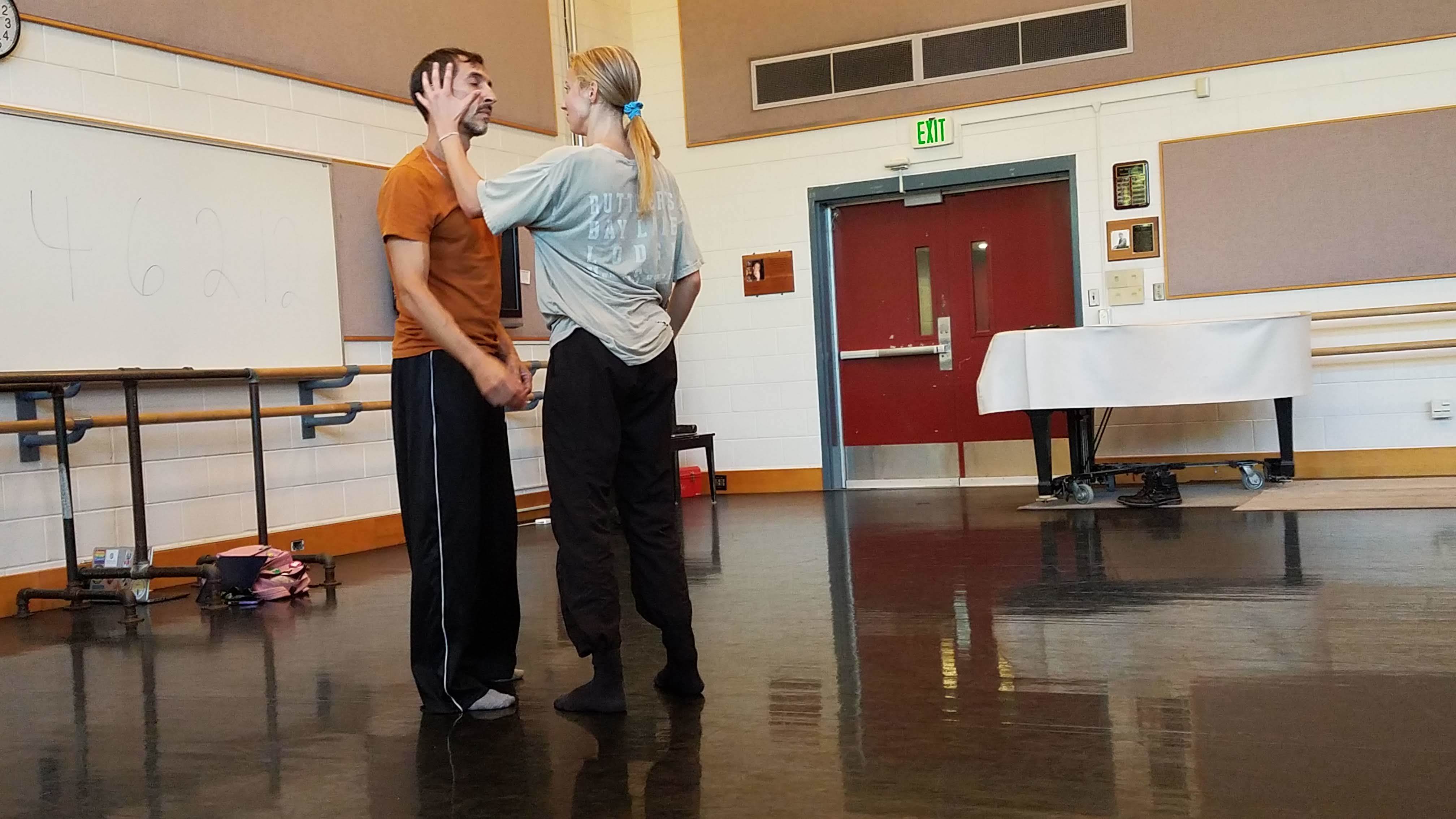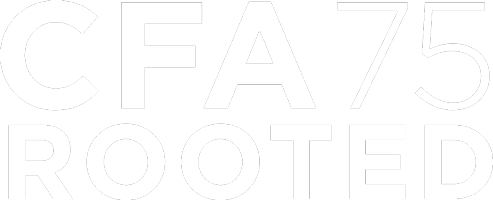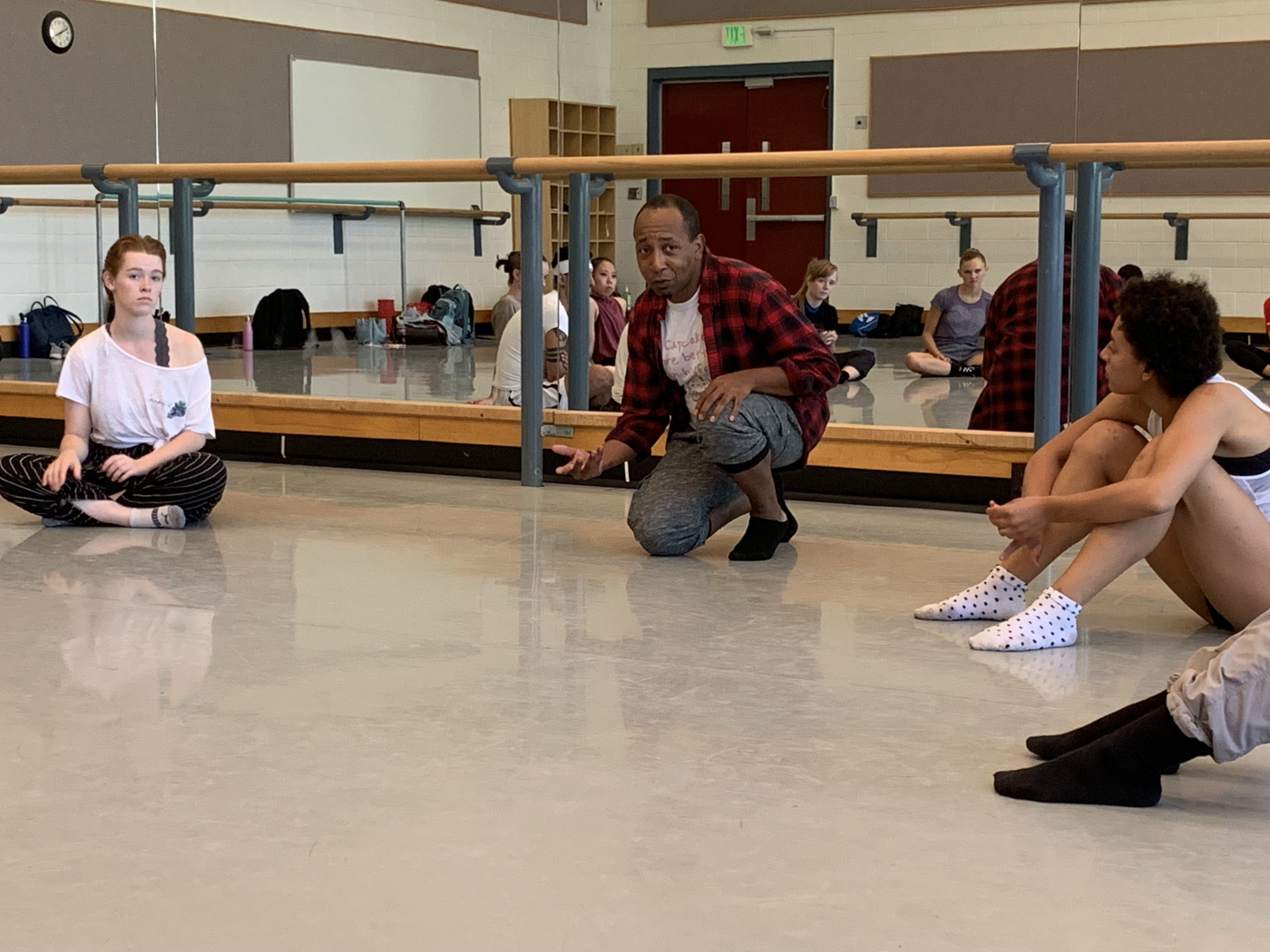This semester, the School of Dance hosted guest artists Omar Carrum and Charles Anderson, whose work will be shown this week in Performing Dance Company’s fall concert, opening this Thursday in the Marriott Center for Dance. In brief but powerful residencies on campus, these artists left more than just polished works behind. The philosophies and experiences they shared with dancers continue to have lingering impact beyond the stage and studio.
Hailing from Mexico City, choreographer Omar Carrum collaborated with the students to create “Alchemy of the 7 Elements,” an elegant journey through the dancers’ memories and beliefs. “I've been researching how to use our deepest emotions without them disturbing or hurting us while accessing them -- to be able to go in and out, using just a drop of sincerity in the process,” Carrum said. “I think of movement as reactions of what’s happening inside.”  Omar Carrum partners with School of Dance student
Omar Carrum partners with School of Dance student
While in the studio, Carrum worked with “the development of fictional characters based on real experiences from our past histories, and how those histories interweave with the histories of others.” He asserted, “I truly believe that artists are alchemists that can change any ‘lead’ experience into a ‘gold’ metaphor.”
“So many dance teachers say ‘leave your baggage at the door’ but Omar explicitly asked us to share our baggage with him and each other. Omar helped us develop individual characters by combining different versions of ourselves,” dancer Arin Lynn said. “Personally, I am learning a lot about what identity means to me. By researching these types of questions, we become more alive inside of performance.”
Lynn also found Carrum’s “drop of sincerity” a useful tool in making performance honest but not overbearing. “This idea has affected all of our dancing and I believe it will take me a long time to fully understand that concept,” Lynn said. “However, the drop of sincerity awakened a psycho-physical awareness which has changed my relationship with my own dancing for the better.”
Choreographer Charles Anderson worked with 15 dancers, including both ballet and modern majors, to reconstruct an excerpted version of "(Re)current Unrest," an evening length immersive performance ‘ritual’ built upon the sonic foundation of Steve Reich’s three earliest works. The larger project began as an investigation of legacy, authorship and citizenship and protest through the lens of the erasure of the Africanist presence inside of Reich’s compositions. The excerpted version, “(Re)current Unrest: We Are The People” is a meditation on the increase in racially motivated violence and what it means to be an American.
Anderson wrote, “I am a Richmond, VA born and raised, Black, gay, first-generation, ivy league college educated artist-educator-activist. As a choreographer I am formally trained as a post-modernist. As an African American artist committed to dance for social justice, I am a kinetic storyteller. I approach choreography and dance theatre as metaphor for kinetic storytelling or testimony. I create dance-theatre that is informed and inflected by contemporary expressions of African Diasporic vernacular dance.”
Graduate teaching assistant Alexandra Barbier assisted Anderson in the rehearsal process. For Barbier, Anderson’s work extended far past technique and “steps.” “Parts of the choreography are pretty complicated, but I believe that one of Charles's main goals in setting this work was to build community and to expose us to the unquestioned, sometimes problematic, ideologies within our culture that shape how we learn and perform as dancers,” she said.
When it comes to social activism, the final performance product is not the only place of impact. Barbier continued, “Charles led conversations about race, class, gender, the systems that perpetuate oppression and the questions we should ask ourselves in order to dismantle these systems. I have no doubt that the cast will continue to grapple with these ideas outside of the time spent in the studio... and that is the activism. The audience may not engage with these concepts beyond the 12 minutes they spend viewing the final product, but the knowledge gained in the process will (hopefully) live on and be disseminated by the dancers as they interact with the world.”
Don’t miss the chance to see Performing Dance Company Oct. 3-5 and 17-19. For more information visit dance.utah.edu.


